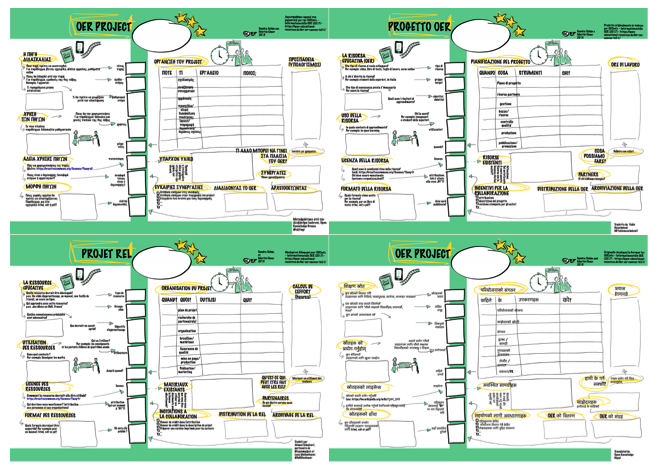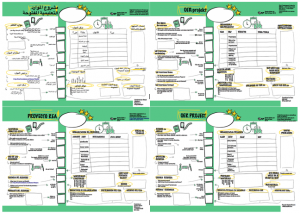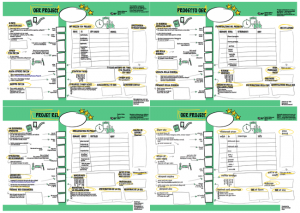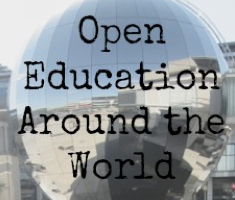by Sandra Schön, Javiera Atenas and Martin Ebner
A couple of weeks ago, the Open Education Working Group, decided to partner with OER info, to translate a beautiful Canvas to create OERs and OER project. To translate the Canvas we launched an Open Call via our twitter channels and we got a great response.
The Canvas was originally developed in German by Sandra Schön @sandra_schoen , and Martin Ebner @mebner for @OERinfo – Informationsstelle OER (2017) – https://open-educational-resources.de/der-oer-canvas-teil-1/
So far, and thanks to the following Open Education Fellows, the Canvas was translated into:
- Arabic: Ahmed Almakari @ahmedalmakari [@openmedpro ]
- Catalan: Maria Feliu @marieta_feliu
- Dutch: Maartje Henderikx @MaartjeOU
- English: Sandra Schön @sandra_schoen [@OERinfo ], Alicia Bankhofer @aliciabankhofer and Javiera Atenas @jatenas [@okfnedu]
- Finnish: Calkin Suero Montero
- French: Ahmed Almakari @ahmedalmakari [@openmedpro ] and Luca Mollenhauer @M0llenhauer
- Galician: Bea de los Arcos @celTatis [@GOGN_OER ]
- Greek: Alexandra Ioannou @okfngr
- Italian: Fabio Nascimbeni @fabionascimbeni [@okfnedu] [@openmedpro ]
- Japanese Mike Lyons @LyonsSole
- Maltese: Romina Cachia @rominacachia [@openmedpro ]
- Montenegrin: Natasa Perovic @NatasaPerovic
- Nepalese: Nikesh Balalami @okfn_np
- Portuguese: Viviane Vladimirschi @vvladi and Tel Amiel @edaberta
- Slovenian: Davor Orlic @orlicdavor [@OpenupSLO]
- Spanish: Javiera Atenas @jatenas [@okfnedu] and Virginia Rodés @vrodes [@nucleoREA ]
- Swedish: Sara Mörtsell @SaraMrtsell [@WikimediaSE]
About the Canvas
What do teachers and others have to consider when planning an OER project? How do you proceed? The OER-Canvas, printed on paper or blocks in DIN A3, supports the first idea collection or -concretisation. It was originally developed in German for Germany’s OER platform and adaptation for the Austrian OER project, and is now available as English version.
The translated versions
- You can access the translated versions of the Canvas here
- OER-canvas_Arabic
- OER-canvas_Catalan
- OER-canvas_Dutch
- OER-canvas_English
- OER-canvas_Finnish
- OER-canvas_French
- OER-canvas_Galician
- OER-canvas_German
- OER-canvas_GREEK
- OER-canvas_Italian
- OER-canvas_Japanese
- OER-Canvas_Maltese
- OER-canvas_Montenegrin
- OER-canvas_Nepali
- OER-canvas_Portuguese
- OER-canvas_Slovenian
- OER-canvas_Spanish
- OER-canvas_Swedish
New Additions
From the OER idea to the OER project
How can OER be planned and what are the steps to follow? Materials about „how-to OER“ often focus on licensing issues or the didactic design of educational resources, but not on OER projects as a whole. However, we wanted something more concrete and produced a template that supports step by step in describing the first ideas for OER projects: the OER-Canvas.
Who the OER-Canvas is intended for
The OER-Canvas offers teachers and others who create educational materials a support in the collection of ideas and initial concretisation of their OER project. It guides you through the individual planning steps. It is intended for all those who already have experience in the development of learning materials and know about the different CC licences.
How to use the Canvas
The canvas should be printed in DIN A3. Smaller is too small. If you have it professionally printed, please make sure that you can easily write at the paper.
Then the sketch of the planned OER project can take shape with the help of the canvas. Start with the project title above. Then a more detailed description of the planned educational resource is supported on the left side of the canvas: Who should use the resource (s) in which situation? What open license is being sought? The answer to this question usually has a strong impact on whether there are materials already produced by third parties that can be used. Only those who use a CC BY-SA license can use the resources of Wikipedia, for example. Further questions on the left side of the canvas are: In which format should the resources be made available? Should it be a worksheet, a video tutorial, an interactive exercise?
On the right-hand side of the canvas, the focus is more on aspects of project management: What can a realistic work and schedule look like? What is needed for the project? If you don’t want to realize the project on your own, you should consider early on which incentives can be offered by participants and how they can be addressed. Especially if it is a larger project with several partners or many people involved, the canvas can be a good basis for discussion.
A template for the OER project – for small and large projects
The presented canvas is of course only a first sketch – for a big project like L3T 2.0, where the “Textbook for Learning and Teaching with Technologies” was reissued within seven working days by 250 people, a more precise planning is necessary.
But for smaller projects and ad hoc considerations for an OER project, the canvas can help to fix initial ideas and sort thoughts. This is helpful for structuring the discussion with colleagues. In addition, a concretisation in advance (target group, format, license) is helpful in order to address potential supporters in a more targeted way.
If you want to translate the Canvas please contact @OERinfo or @okfnedu
And if you want to tell us how you are using it, please contact us @OERinfo and @okfnedu so we can publish your story,
About the authors:
Sandra Schön is senior researcher at Salzburg Research Forschungsgesellschaft (Austria) (http://sandra-schoen.de, @sandra.schoen at twitter)
Javiera Atenas is the Co-coordinator for the Open Education Working Group.
Martin Ebner is responsible for e-learning at the University of Technology Graz (Austria) (http://martin-ebner.at, @mebner at twitter) Both are dedicated OER producer and ambassadors of OER, e.g. (co-) organised several, also awarded MOOCs about OER – seehttps://imoox.at/mooc/local/courseintro/views/startpage.php?id=42
 Open Education Working Group
Open Education Working Group 






